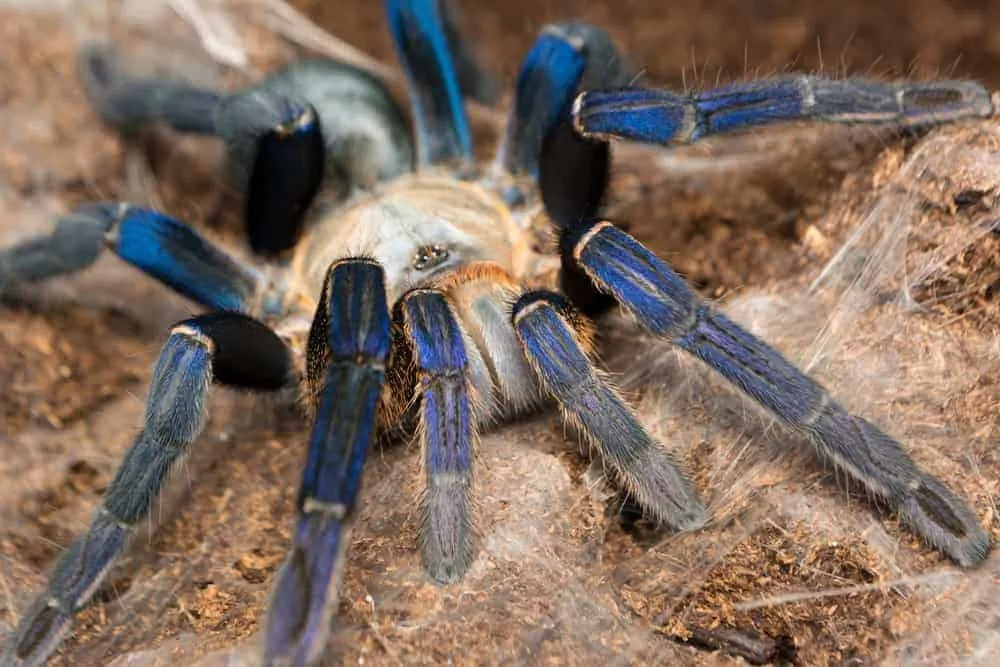Top 5 Facts about Cobalt Blue Tarantulas in the UK
The Cobalt Blue Tarantula (Cyriopagopus lividus) is a captivating arachnid, drawing enthusiasts with its striking coloration and intriguing behaviour. This comprehensive guide unveils five essential facts about these magnificent creatures, specifically tailored for the UK audience. From understanding their unique characteristics to navigating their care requirements and the legal landscape, this article aims to equip both aspiring and seasoned keepers with valuable insights, fostering responsible ownership and appreciation for these fascinating invertebrates. Delve into the world of the Cobalt Blue Tarantula and discover what makes it such a sought-after pet in the UK, and learn the specifics needed to care for them.
Appearance and Characteristics
Cobalt Blue Tarantulas are renowned for their iridescent blue coloration, a spectacle that makes them highly prized in the pet trade. The vibrant blue hue, most prominent on their legs and carapace, is a result of structural coloration, where the arrangement of microscopic structures refracts light, producing the eye-catching blue appearance. Beyond their captivating colour, these tarantulas possess a robust build, with females typically larger than males, reaching a leg span of up to 5-6 inches. They are a terrestrial species, meaning they spend most of their time on the ground, and they possess the typical characteristics of tarantulas including fangs for injecting venom and spinnerets for producing silk.
Unique Colouration
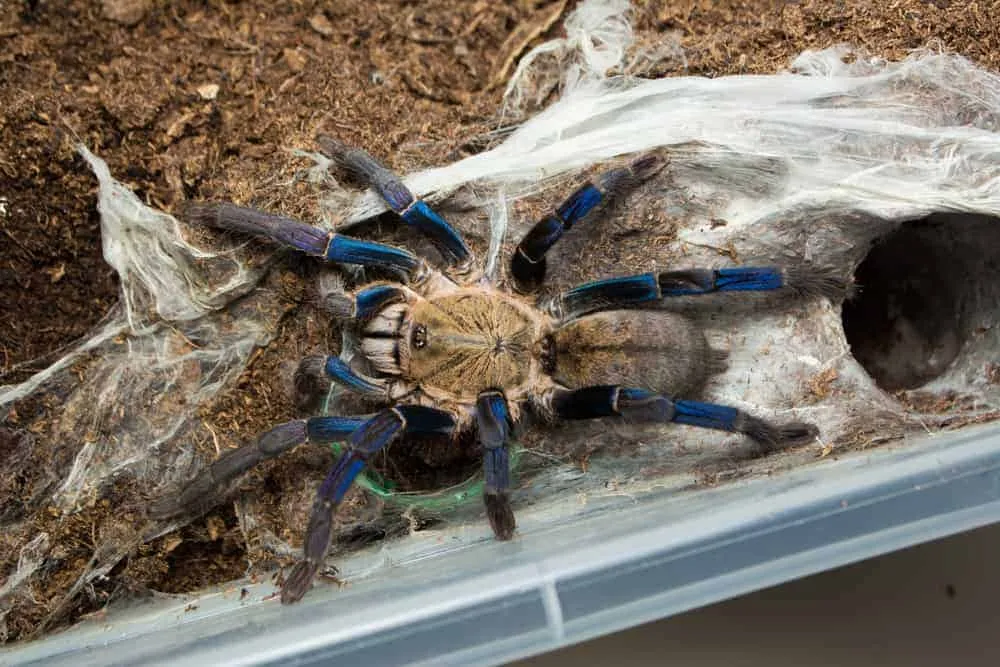
The striking cobalt blue colouration is, without a doubt, one of the most defining features of the Cyriopagopus lividus. This colour is not due to pigmentation, like the colours in many other animals, but is structural, caused by the way light interacts with the microscopic structure of their exoskeletons. This structural colouration gives them an almost metallic sheen, particularly in good lighting. The intensity of the blue can vary slightly depending on the tarantula’s age, moult cycle, and even environmental factors. The blue colour is most prominent on their legs and the carapace, making them a true visual delight for tarantula enthusiasts.
Size and Lifespan
In terms of size, these tarantulas reach a moderate size, with females generally growing larger than males. A mature female Cobalt Blue Tarantula can have a leg span of up to 5-6 inches. Males are typically smaller. The lifespan of these tarantulas also differs based on their sex. Females can live for an impressive 12-15 years or even longer, while males have a significantly shorter lifespan, usually around 3-5 years. This difference in longevity is a key factor to consider when owning one, as it affects the long-term commitment involved in their care.
Habitat and Native Region
Understanding the natural habitat of the Cobalt Blue Tarantula is essential for providing appropriate care in a UK setting. These tarantulas are native to the tropical rainforests of Myanmar (Burma) and Thailand. In the wild, they inhabit burrows, often utilising natural crevices or creating their own underground retreats. The environment is characterised by high humidity and warm temperatures, which are crucial aspects to replicate in captivity to ensure their well-being. The specific microhabitats they occupy within these forests are often close to the ground, offering a degree of protection from predators and the elements.
Where They Come From
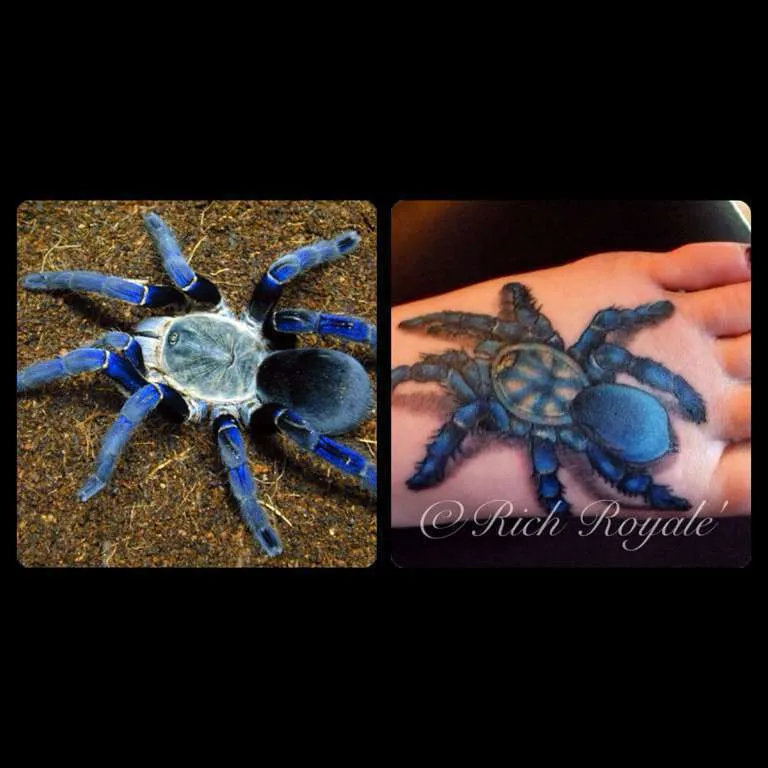
Cobalt Blue Tarantulas originate from the tropical regions of Southeast Asia, specifically Myanmar and Thailand. Within these countries, they are found in areas with dense rainforests, characterized by high humidity and consistent temperatures. The native populations are subject to conservation efforts to manage them within the ecosystem. They are a part of a complex ecosystem, and these tarantulas play a role in the local biodiversity. Their natural habitat helps shape the specific care requirements necessary to keep them healthy in captivity.
Preferred Environment
The preferred environment of a Cobalt Blue Tarantula is a humid and warm setting, replicating its native rainforest habitat. They thrive in temperatures ranging from 24-29°C (75-84°F) and require a humidity level of 70-80%. This can be achieved by providing a suitable substrate and regular misting. They are primarily ground-dwelling creatures, so the enclosure should have a substrate depth that allows them to burrow if desired. A hide, such as a piece of cork bark or a manufactured shelter, provides a secure retreat, crucial for the tarantula’s well-being. The specific microclimate within the enclosure is more important than the ambient room conditions.
Care and Husbandry in the UK
Successful care for a Cobalt Blue Tarantula in the UK involves meticulous attention to detail. Replicating their natural environment is paramount, focusing on temperature, humidity, and substrate. The enclosure should be appropriately sized for the tarantula, providing ample space to move and explore. Regular cleaning and maintenance are essential to prevent the build-up of bacteria and ensure the tarantula’s health. This includes removing uneaten food, replacing the substrate periodically, and ensuring the water dish is always full and clean. Careful observation of the tarantula’s behaviour and appetite is also key to identifying any potential health issues early on.
Diet and Feeding
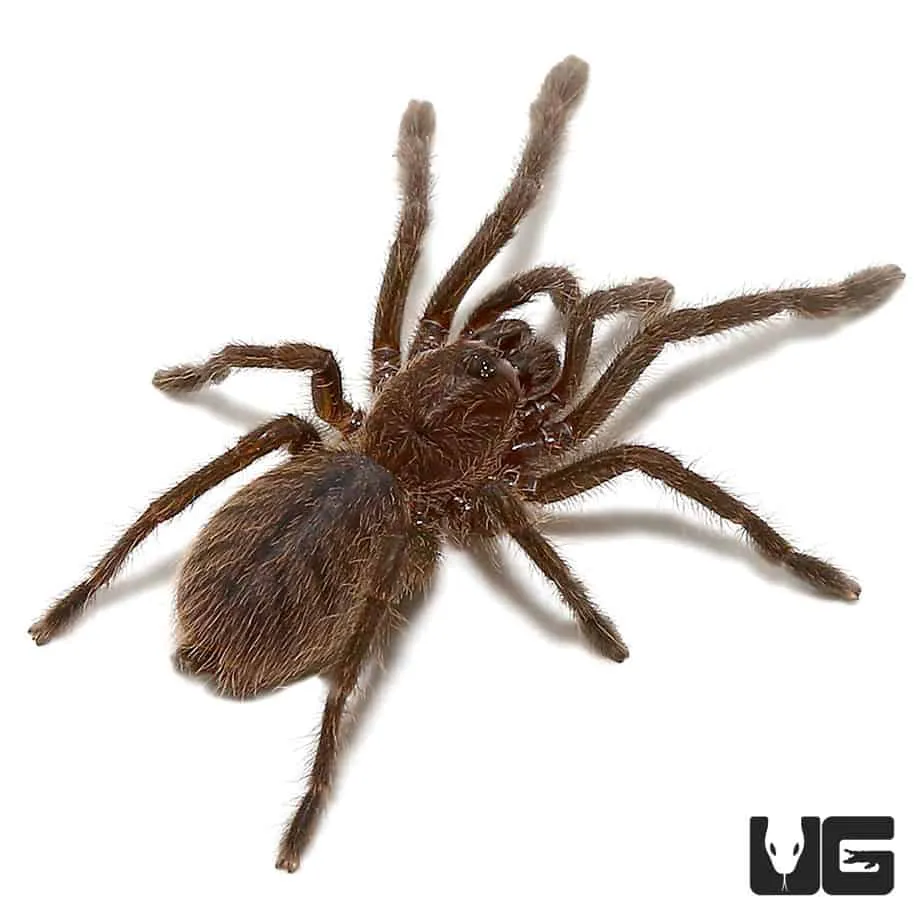
Cobalt Blue Tarantulas are carnivores, primarily feeding on insects in the wild. In captivity, a varied diet of insects is recommended. Crickets, cockroaches, mealworms, and locusts are all suitable options. The size of the prey should be appropriate for the size of the tarantula, ensuring that it can be easily captured and consumed. Overfeeding can lead to obesity, so it’s important to monitor the tarantula’s abdomen for signs of being overfed. Feeding frequency depends on the tarantula’s age and appetite, but typically, adults are fed once or twice a week, while spiderlings may need to be fed more often.
Housing Requirements
Housing a Cobalt Blue Tarantula requires a secure and appropriately sized enclosure. A glass or plastic terrarium is suitable, ensuring that it has a secure lid to prevent escape. The enclosure should be large enough to provide adequate space for the tarantula to move around, and a good substrate is necessary for burrowing. Substrates such as coco coir, peat moss, or a mix of both, are ideal for maintaining humidity. A water dish should be provided, and the enclosure should be equipped with a hide or shelter to provide security. Ventilation is necessary to prevent mold growth and maintain a healthy environment. The enclosure should be kept in a room with a stable temperature, away from direct sunlight and drafts.
Legality and Availability in the UK
The legality and availability of Cobalt Blue Tarantulas in the UK are essential aspects to consider. These tarantulas are not currently listed under any special regulations and are legal to own in the UK. However, it’s crucial to purchase them from reputable breeders or suppliers to ensure they are captive-bred and healthy. Sourcing from ethical and responsible sources helps support conservation efforts and minimize the impact on wild populations. Always check local regulations, as rules may vary in different parts of the UK. Be certain to be aware of any changes to legal regulations that may affect keeping these animals.
Buying and Owning a Cobalt Blue Tarantula
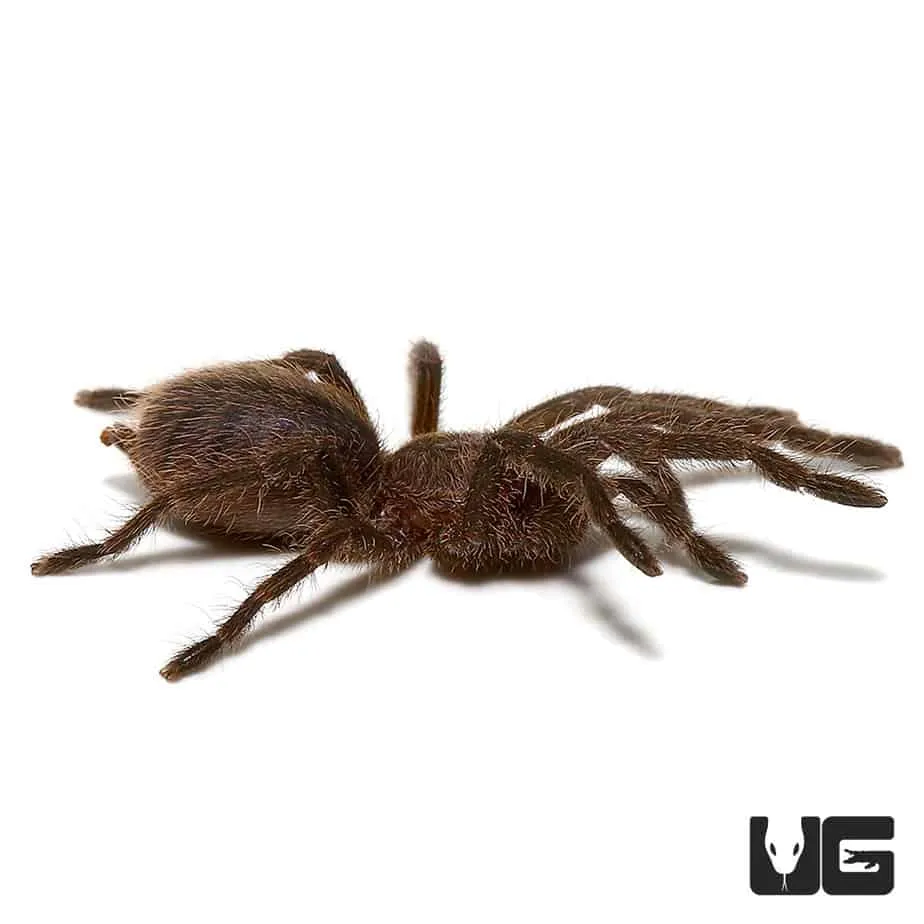
When buying a Cobalt Blue Tarantula in the UK, it is very important to choose a reputable breeder or supplier. Look for healthy specimens, and avoid those showing signs of illness or stress. It is important to check for any visible injuries or abnormalities. Ask the breeder about the tarantula’s feeding habits, moult history, and any other relevant information. Set up the enclosure before bringing the tarantula home, ensuring that the habitat meets all the necessary requirements. Be patient, and allow the tarantula to acclimate to its new environment. Remember that owning a tarantula is a long-term commitment, and requires dedication to its care and well-being.
Conservation Status
While the Cobalt Blue Tarantula is not currently classified as endangered, it’s crucial to be mindful of its conservation status. The pet trade can sometimes pose a threat to wild populations if not managed responsibly. Supporting ethical breeders and avoiding the purchase of wild-caught specimens helps promote sustainable practices. Educating oneself about the species’ natural habitat and threats can also contribute to its conservation. Being a responsible keeper means understanding the potential impact your hobby has on the broader environment.
Potential Risks and Considerations
Owning a Cobalt Blue Tarantula comes with certain risks and considerations. While their venom is generally not considered lethal to humans, a bite can be painful and cause localized symptoms. It’s important to be aware of potential allergic reactions. Handling should be kept to a minimum, and always done with caution, as tarantulas can be skittish and defensive. Educating oneself about safe handling practices is essential, and understanding the signs of stress or aggression in the tarantula can prevent potential incidents. Furthermore, the lifespan of a Cobalt Blue Tarantula means it is a long-term commitment, so consider your ability to provide care for an extended period.
Handling and Safety
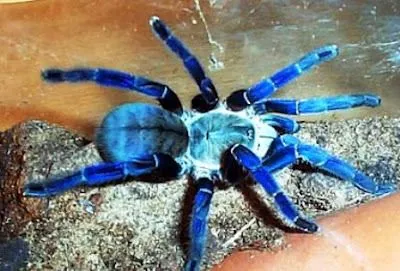
Handling a Cobalt Blue Tarantula is generally not recommended unless absolutely necessary, such as for health inspections or transferring the tarantula to a different enclosure. If handling is required, it should be done with extreme caution. Avoid sudden movements or gestures, which can startle the tarantula. Use a soft brush to gently guide the tarantula if needed, never try to grab or force it. Always handle the tarantula over a soft surface, like a bed or a large container, in case it falls. After handling, wash your hands thoroughly with soap and water. Be aware of the tarantula’s behaviour, and be prepared to back off if it shows any signs of aggression, like raising its front legs or flicking its hairs.
Venom and Toxicity
The Cobalt Blue Tarantula possesses venom, as do all tarantulas, which is used to subdue its prey. However, their venom is not considered highly toxic to humans. A bite from a Cobalt Blue Tarantula can be painful, causing localized symptoms like redness, swelling, and muscle cramps at the bite site. In rare cases, more severe reactions can occur, especially in individuals who may be allergic. Medical attention is typically not required, but it is important to monitor the affected area and seek medical advice if symptoms worsen or persist. It is important to note that even though their venom is not highly toxic, they are still venomous animals, and caution should always be exercised.
Allergic Reactions
Some individuals may experience allergic reactions to tarantula hairs or venom. If a bite or contact with urticating hairs occurs, symptoms like skin irritation, itching, and respiratory issues are possible. People with known allergies to insect bites or stings are at increased risk. If an allergic reaction is suspected, antihistamines may help alleviate symptoms. In more severe cases, such as difficulty breathing or swelling of the throat, immediate medical attention is necessary. It’s also important to be aware of the potential for contact dermatitis from the urticating hairs, which can cause skin irritation. Proper hygiene and handling practices can help minimize these risks.
Lifespan and Needs
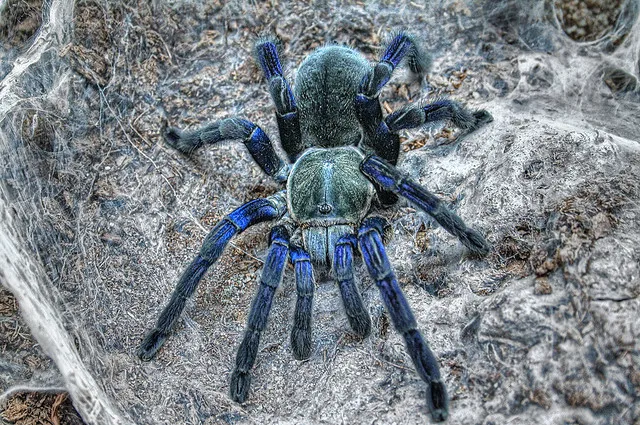
Understanding the lifespan of a Cobalt Blue Tarantula is essential for responsible ownership. As mentioned earlier, females can live for a significantly longer period, approximately 12-15 years, while males have a shorter lifespan, typically 3-5 years. This difference in longevity is a crucial factor to consider when acquiring a Cobalt Blue Tarantula, as it represents a considerable long-term commitment. The needs of the tarantula also evolve over time. Regular care, appropriate housing, and consistent attention to diet and health are crucial for ensuring the tarantula’s well-being. Regular monitoring of the tarantula’s behaviour, feeding habits, and moult cycles is also important to keep it healthy.
